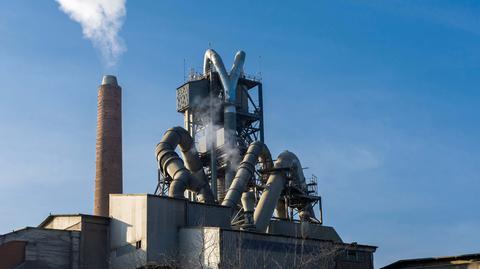Biznes Fakty
A sector with problems. „An additional challenge”

The production of cement stands as one of the primary contributors to greenhouse gas emissions in Poland. In 2022, it accounted for more than 20 percent of industrial emissions, as highlighted by the Polish Economic Institute. Emerging technologies, such as CO2 capture and storage, are expected to aid in the decarbonization of this sector.
Experts from the Institute emphasized in PIE’s „Economic Weekly” that the challenges in decarbonizing cement production processes stem partly from the nature of the industry’s emissions. They clarified that the emissions are largely driven by process emissions, which arise from chemical reactions.
The industry is a leading source of greenhouse gas emissions
„In the European Union, about 60 percent of emissions from the cement industry come from process emissions linked to the calcination of limestone into calcium oxide, while 30 percent is attributed to heat requirements, and merely 10 percent arises from electricity usage,” they noted.
As per PIE, the pivotal technology for decarbonizing this sector both in Poland and internationally will be carbon capture and storage (CCS). „The Kujawy Cement Plant, owned by Holcim Polska SA, is currently executing the only industrial-scale CO2 capture initiative in Poland,” the Institute reported.
It was added that the first industrial CCS facility is set to be operational by 2030 and is expected to capture approximately 10 million tons of CO2 within a decade. This would represent around 10 percent of the total emissions from Polish cement production annually.
Challenges to the decarbonization of cement plants
„A significant obstacle to the advancement of CCS technology is that current Polish legislation does not allow for the storage of CO2 underground, which would greatly lower the costs associated with this technology,” the experts pointed out.
The Kujawy Cement Plant might explore the option of transporting CO2 to storage facilities in Norway located in the North Sea. The other nine cement plants are situated in the so-called Cement Belt, which stretches from the Opole region to southern Lublin, making the potential for profitable CO2 transport via gas pipelines to the North Sea and the Norwegian continental shelf less likely.
PIE experts indicated that hurdles related to decarbonization, environmental protection, and high energy costs have contributed to an 18% decline in Polish cement production from 2019 to 2023. Simultaneously, they noted, the significance of imports has risen, and between 2015 and 2023, Germany emerged as the largest exporter of cement to Poland. Until 2022, supplies from Belarus also played a crucial role, but the fifth sanctions package against Russia and Belarus, adopted in April 2022, prohibited cement imports from those regions.
As reported by the Institute in a publication last year, Ukraine has become the largest foreign supplier of cement to Poland, replacing Belarusian and partially German imports. In 2024, cement imports from Ukraine reached 660 thousand tons.
„The increasing imports from Ukrainian cement plants, which do not incur costs for CO2 emissions allowances, may create an additional challenge for the competitiveness of Polish plants, particularly in light of the withdrawal of free allowances for EU producers under the EU ETS (EU Emissions Trading System – ed.)” – assessed PIE.
According to the Institute, the solution to these challenges should involve the decarbonization of Polish cement production through CCS technology, while considering the possibility of underground CO2 storage.



